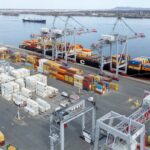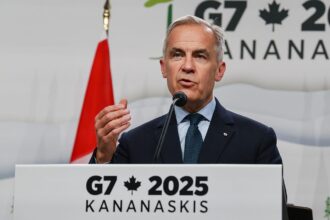The meticulous security apparatus surrounding last week’s G7 Summit in Charlevoix has been hailed as “largely successful” by Canadian officials, even as investigations continue into a troubling airspace breach that raised questions about potential vulnerabilities in the protective shield around world leaders.
“We established multiple layers of security and comprehensive contingency plans that proved effective throughout the summit,” said Public Safety Minister Marco Mendicino at a press briefing yesterday. “The coordinated response to the airspace incursion demonstrated our security forces’ readiness to address potential threats with precision and control.”
The breach occurred when a small civilian aircraft piloted by 34-year-old Montreal resident Thomas Renaud entered the heavily restricted airspace over the summit venue. RCMP tactical units quickly intercepted the aircraft after it landed in a field approximately three kilometers from where discussions between world leaders were taking place.
Security experts have praised the swift response while acknowledging the incident warrants thorough examination. “The reaction time was impressive,” noted Dr. Elise Laurent, former security advisor to the Canadian government and current analyst at the Institute for Strategic Studies. “However, questions remain about how the aircraft managed to penetrate the no-fly zone in the first place.”
Authorities have confirmed that Renaud remains in custody as investigators from multiple agencies, including CSIS and the RCMP, work to determine his motivations and whether he acted alone. Sources close to the investigation indicate that no evidence of terrorist connections has emerged thus far, though officials caution that all possibilities remain under consideration.
The security operation for the G7 Summit, estimated to have cost approximately $395 million, involved over 8,000 personnel from various law enforcement and military units across Canada. The comprehensive security perimeter extended 15 kilometers around the summit location, with naval vessels patrolling coastal waters and fighter jets on standby throughout the three-day event.
Beyond the airspace incident, the security operation faced other challenges, including coordinating multiple protest groups that gathered near the exclusion zone. Civil liberties observers have praised the balanced approach taken by security forces.
“Unlike previous international summits where heavy-handed tactics escalated tensions with demonstrators, the security presence at this G7 managed to maintain public safety while respecting the right to peaceful protest,” said Colleen Thompson of the Canadian Civil Liberties Association.
The summit’s security coordinator, RCMP Commissioner Brenda Lucki, indicated that a comprehensive after-action review is already underway. “We’ll be examining every aspect of the security operation, with particular attention to the airspace breach. These findings will inform our approach to future high-profile international events hosted in Canada.”
As Canada prepares to welcome world leaders for the Commonwealth Heads of Government Meeting next year, the lessons learned from the G7 security operation will prove invaluable. The question remains: in an era of evolving security threats, can even the most comprehensive security plans ever be truly impenetrable?














